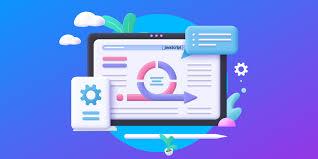iOS Mobile Application Development: A Complete Guide for 2025

In the ever-evolving digital ecosystem, iOS mobile application development has emerged as a cornerstone for businesses aiming to capture the premium user segment. With over 1.5 billion active Apple devices globally, creating a robust and intuitive iOS app is no longer optional—it’s essential for growth and innovation.
What is iOS Mobile Application Development?
iOS mobile application development refers to the process of creating apps that run on Apple’s iOS operating system, which powers iPhones, iPads, and iPod Touch devices. Developers use languages like Swift and Objective-C, and tools like Xcode and SwiftUI to build feature-rich applications tailored to Apple’s design and performance standards.
Why Choose iOS for App Development?
-
High Security Standards
Apple is known for its stringent security protocols. iOS apps are more secure due to features like data encryption, Face ID, and App Store guidelines that reduce the risk of malware. -
Loyal User Base
iOS users are known for high engagement and spending power. Developing for iOS allows businesses to tap into a lucrative market with better ROI. -
Smooth User Experience
With standardized devices and a unified ecosystem, iOS apps offer consistent performance and user experience across all Apple devices. -
Fast and Consistent Updates
iOS users typically update to the latest version quickly, allowing developers to focus on a consistent environment for app performance and features.
Key Tools and Technologies
-
Swift – Apple's powerful and intuitive programming language for iOS development.
-
Objective-C – A legacy language still used in some projects.
-
Xcode – Apple's official IDE for building and testing iOS applications.
-
SwiftUI – A modern UI framework for designing visually appealing and responsive interfaces.
-
TestFlight – A beta testing platform that allows developers to test apps before public release.
iOS App Development Process
-
Market Research and Planning
Understand your audience, competitors, and app goals. Define key features and create a project roadmap. -
UI/UX Design
Use Apple’s Human Interface Guidelines to create a seamless and intuitive user interface. -
Development and Coding
Build app functionality using Swift or Objective-C. Integrate APIs, backend services, and third-party libraries as needed. -
Testing and Debugging
Use tools like XCTest and TestFlight to identify bugs and ensure smooth performance. -
Deployment to App Store
Prepare App Store listings, follow Apple’s review guidelines, and launch your app to a global audience. -
Maintenance and Updates
Regular updates keep your app relevant, improve performance, and ensure compatibility with the latest iOS versions.
Best Practices for Successful iOS App Development
-
Prioritize performance and optimization
-
Focus on a clean, intuitive UI
-
Ensure cross-device compatibility (iPhone, iPad)
-
Use native iOS features like Siri, ARKit, and Face ID when relevant
-
Follow Apple’s App Store Guidelines rigorously
Final Thoughts
iOS mobile application development is a strategic investment for any brand looking to deliver top-tier digital experiences. By leveraging Apple’s powerful ecosystem, developers can create high-performing, secure, and user-friendly applications that drive engagement and revenue.
As the demand for mobile-first solutions continues to rise in 2025 and beyond, businesses that embrace iOS app development will stay ahead of the curve and meet their customers where they are—on their iPhones.
- Art
- Causes
- Crafts
- Dance
- Drinks
- Film
- Fitness
- Food
- Игры
- Gardening
- Health
- Главная
- Literature
- Music
- Networking
- Другое
- Party
- Religion
- Shopping
- Sports
- Theater
- Wellness


